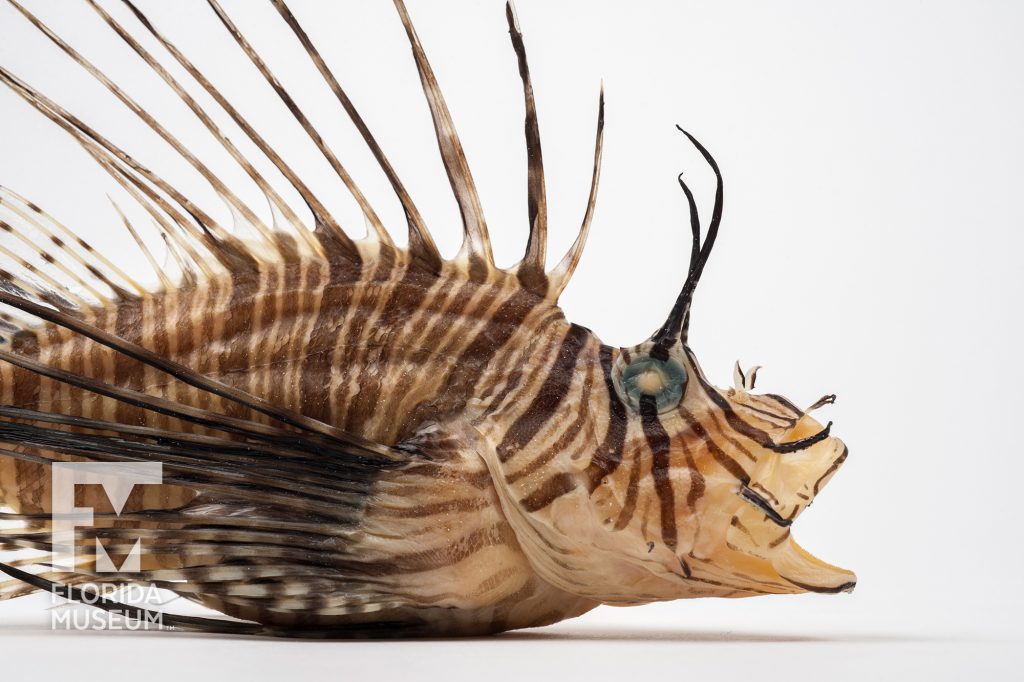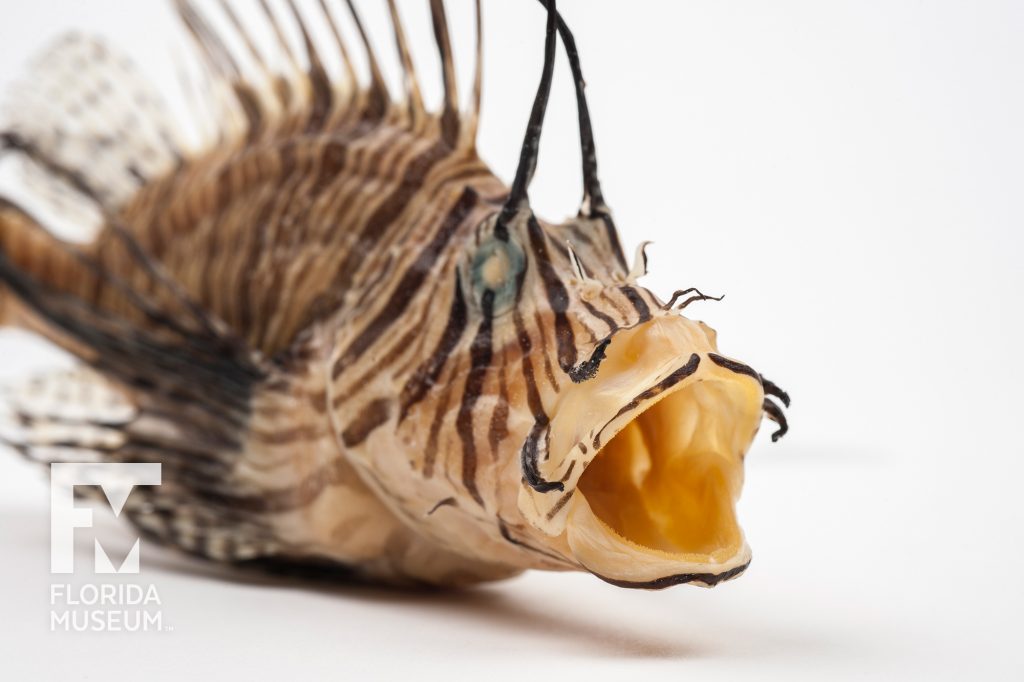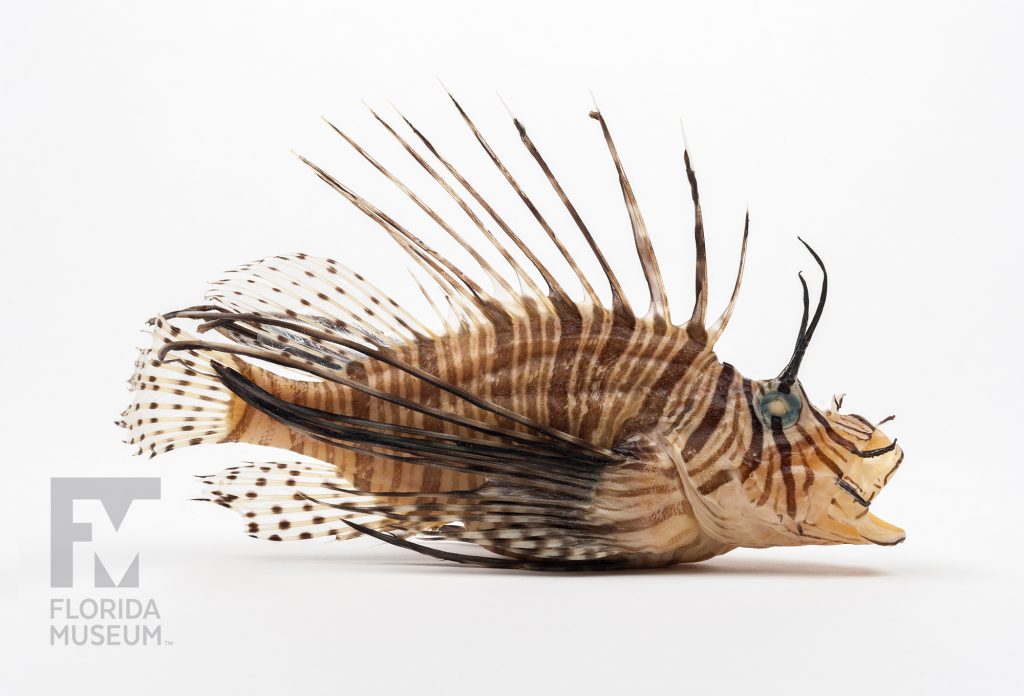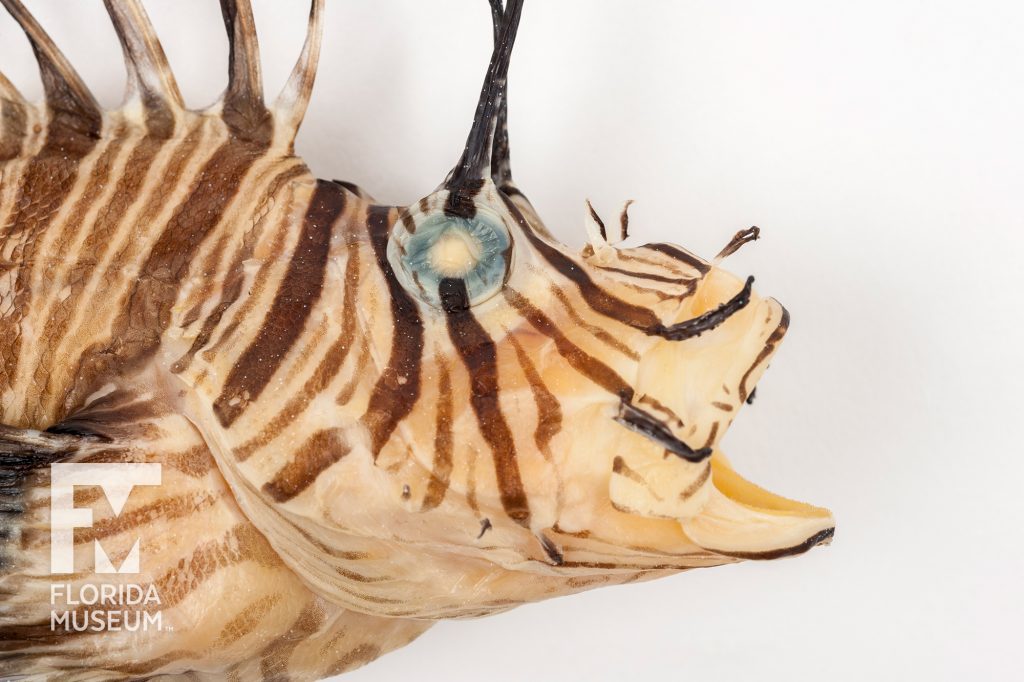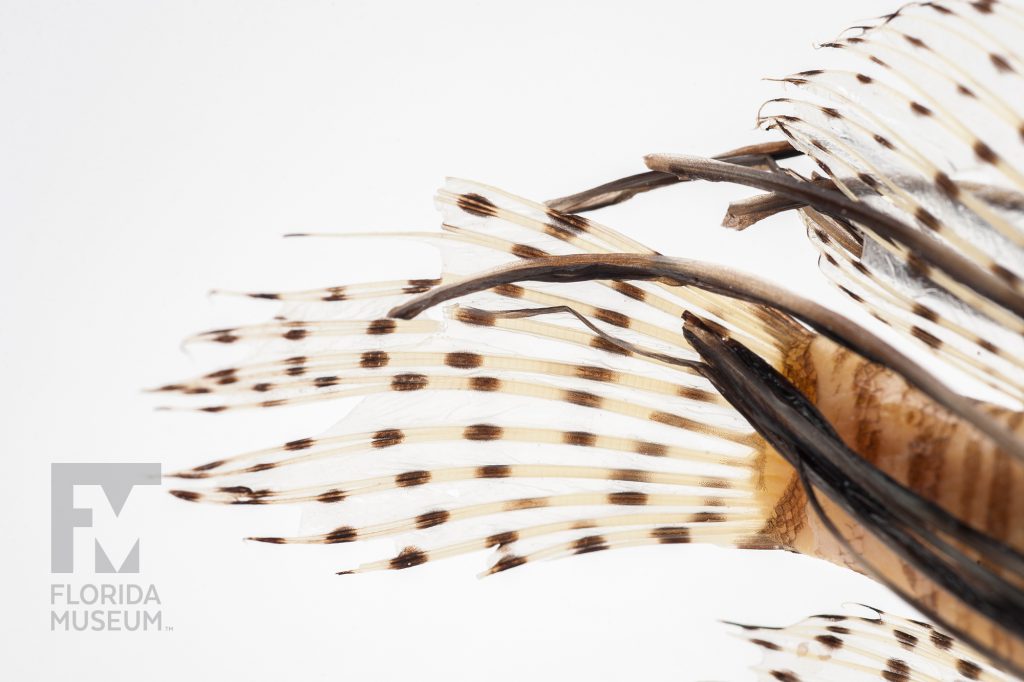Lionfish were introduced to the Atlantic Coast of Florida in the 1980s by either release or escape from marine aquariums. Many populations of reef fishes have declined in areas invaded by Lionfish, and efforts to control their spread have been largely ineffective.
Summary
Pacific Red Lionfish (Pterois volitans)
From Monroe Co., Florida, Mar. 2012
Collection
Story
The Pacific Red Lionfish, introduced to the Atlantic Coast of Florida in the 1980s by way of release or escape from marine aquaria, poses an enormous threat to the health of coral reef systems throughout the western Atlantic Ocean. Native to the Indo-Pacific, Lionfish are cryptic predators that slowly stalk their prey before consuming them whole with lightning-fast jaws. Many populations of reef fishes have declined in areas invaded by Lionfish. Efforts to-date to control their spread have been largely ineffective. Lionfish have long, venomous fin spines and should not be handled without extreme care.
To attempt to control their spread, and simultaneously educate the public about the potential impact of non-indigenous organisms on native ecosystems, Lionfish “rodeos” are now held in many places in Florida. At these events, fishers learn how to safely collect Lionfish – usually by spear – and prizes are given for the most Lionfish, the largest Lionfish, and at some events, the smallest. Scientists attending these rodeos quantify the impact of Lionfish on Florida’s marine environment by analyzing gut contents and reproductive condition of the captured fish. The flesh of Lionfish is white and flaky and of high quality.
Robert Robins
Collection Manager, Ichthyology*
Florida Museum of Natural History
Additional Information
Species profile: Lionfish (Pterois volitans)
Exhibit
On display Sept. 23, 2017-Jan. 7, 2018, Rare, Beautiful & Fascinating: 100 Years @FloridaMuseum celebrated the Museum’s rich history. Each Museum collection was asked to contribute its most interesting items and share the stories that make them special. Though the physical exhibit is closed, this companion website remains online, providing an opportunity to experience the Florida Museum’s most treasured specimens.
Exhibit Area: Objects Tell Stories
Theme: Invasive Species of Florida
 Want to see more? Explore more than 300 breathtaking color photos of plants, animals, fossils and cultural heritage materials from the Florida Museum of Natural History’s collections in the award-winning book All Things Beautiful available from the University Press of Florida.
Want to see more? Explore more than 300 breathtaking color photos of plants, animals, fossils and cultural heritage materials from the Florida Museum of Natural History’s collections in the award-winning book All Things Beautiful available from the University Press of Florida.
*This title was accurate at the time the exhibit was on display in 2017. Please visit the collection website to verify current staff and student information.
